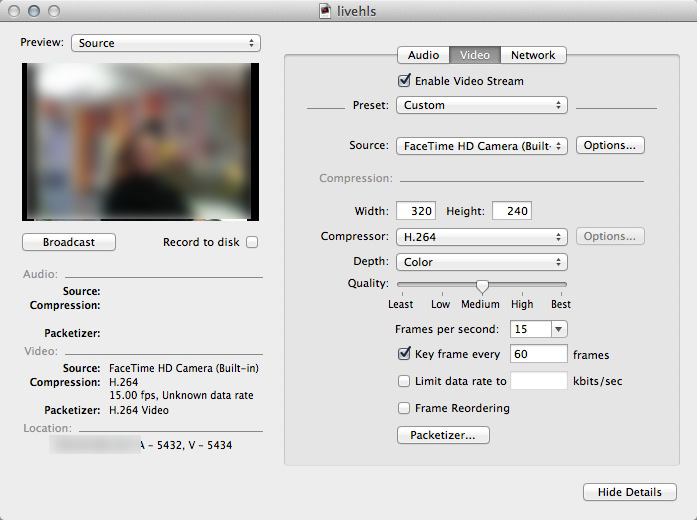

ffmpeg will try to keep the video close to the desired bitrate, and the tolerance tells it how much leeway it has above and below the target bitrate.įinally, we are deinterlacing the video, as the source was NTSC interlaced video. The -s option specifies our frame size, the -b option specifies the desired bitrate, and the -bt option is the bitrate tolerance. It also will have a detrimental effect on file size. With a smaller number, your output will have more keyframes, which means that streaming clients will be able to recover more quickly if they drop packets for some reason. The -g option is the “group of pictures” (GOP) size, which is the number of frames between keyframes. The -r option specifies that our output will be 20 frames per second. We are going to crop our video a few pixels around the border, as we were getting some noise around the edges of our source video. The -threads 0 option instructs ffmpeg to use the optimal number of threads when encoding. I have not seen this documented very well. The first is quality, and the second is the profile to use (main, baseline, etc., with “main” being the default). The -vpre option means that we will use the default quality preset (note that when using libx264 to encode, you can specify two -vpre options. We’re going to use H.264 compression, as provided by the libx264 library. Here we are specifying our video output options. croptop 6 -cropbottom 6 -cropleft 9 -cropright 9 \ vcodec libx264 -vpre default -threads 0 \ monetize uploads on video sharing websitesīook is printed in full color, contains over 100 tables and over 150 images including various diagrams and can be used both like a tutorial and reference.-acodec libfaac -ac 2 -ab 192k -ar 44100 \.join various file formats, modify streams and modify audio channels.encode subtitles directly to the video stream.use various filters in filterchains and filtergraphs.display FFmpeg help and information about its codecs, formats, protocols, etc.set the bitrate, frame rate, maximum file size and related options.display input from 2 webcams in one window.simplify repeated tasks with batch jobs.include a logo or provide Picture in Picture.preview modified input in 2, 3 or 4 windows.convert video to images and images to video.record input from microphone or send it to loudspeakers.display and record input from your webcam.let the computer to read the text with selected voice.generate refrain of winter song Jingle Bells.create sounds with mathematical expressions.scale, pad, crop, flip, rotate, blur, sharpen and denoise video.

The book will try to make you familiar with FFmpeg tools that are used by Facebook, Google and many other companies.


 0 kommentar(er)
0 kommentar(er)
